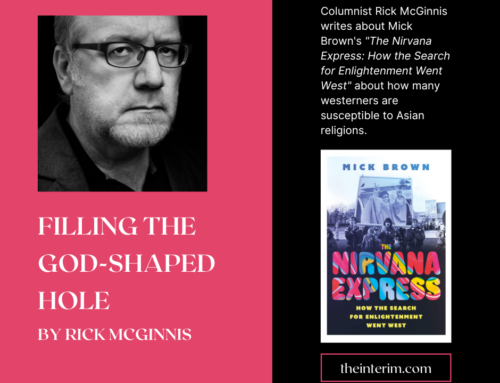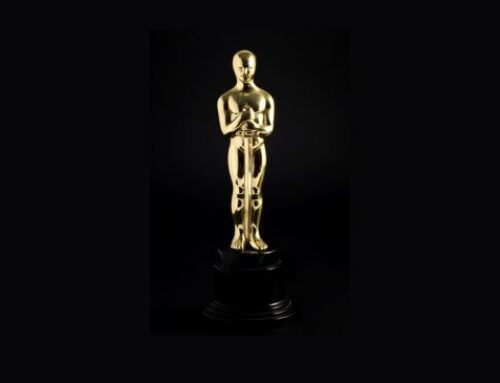 I’m sure that I’ve seen too many movies. There’s no scientific way to be sure, I’ll admit, but the wary feeling I get in my stomach when I sit down in a cinema or open a new DVD is probably some instinctual sign that, many years ago, I should have said “enough, already.” What keeps me going, I suppose, is the rare moment when I discover that there are still films that I should probably have seen long ago, a few of which are so famous that I might have absentmindedly convinced myself that I have watched them, based on a few minutes glimpsed during channel surfing, and the endless quoting and repetition of iconic scenes as pop culture shorthand. Breakfast At Tiffany’s is one of those films.
I’m sure that I’ve seen too many movies. There’s no scientific way to be sure, I’ll admit, but the wary feeling I get in my stomach when I sit down in a cinema or open a new DVD is probably some instinctual sign that, many years ago, I should have said “enough, already.” What keeps me going, I suppose, is the rare moment when I discover that there are still films that I should probably have seen long ago, a few of which are so famous that I might have absentmindedly convinced myself that I have watched them, based on a few minutes glimpsed during channel surfing, and the endless quoting and repetition of iconic scenes as pop culture shorthand. Breakfast At Tiffany’s is one of those films.
The film has been reissued on Blu-ray as part of its 50th anniversary celebrations, which seemed as good a time as any for me to sit down and watch the scenes that happen in between its much-quoted iconic moments – the title credit sequence where Audrey Hepburn window shops at the famous Fifth Avenue jeweller in a black sheath of a cocktail dress; the famous wild party scene; Hepburn and co-star George Peppard’s attempt to buy something for less than ten dollars at Tiffany’s, and the tearful, rain-drenched finale.
There’s no denying the status of Blake Edwards’ 1961 film as a classic, whose fame has utterly overshadowed the Truman Capote novella on which it was (carefully) adapted. Audrey Hepburn’s star turn as Holly Golightly is probably the key role of her career, and no one in the fashion world will deny that Hubert de Givenchy’s costumes for Holly have influenced how women dress from the moment Hepburn stepped out of a cab on that deserted Manhattan morning holding her takeout coffee and danish.
Like many young piano students, I learned “Moon River,” Henry Mancini and Johnny Mercer’s theme song from the film, an achingly wistful and ferociously catchy melody that gave me the tacit impression that the film was a romantic comedy, heavy on the romance.
There’s no doubt that the Holly created by Hepburn, Edwards and screenwriter George Axelrod – though certainly not Capote’s original Holly – has become a feminist icon. In Fifth Avenue, 5 A.M., Sam Wasson’s recent bestselling book about the film, Ms. magazine co-founder Letty Cottin Pogrebin recalls how Hepburn’s Holly became her role model, inspiring her to not only fill her closet with little black dresses like the ones Givenchy made for Hepburn, but to go out and buy “a scooter, a dog, a rabbit, and a little duck,” in order to fill her life with a bit of the “kookiness” Paramount pictures was heavily marketing as the key to Holly’s charm – a kooky smokescreen for the stubborn fact that Holly, as conceived by Capote, was essentially a call girl.
“Holly was my formative prefeminist role model,” Pogrebin told Wasson, a fact echoed by a recent interview given by fellow Ms. co-founder Gloria Steinem to the U.K.’s Guardian newspaper. Steinem copied the blonde streaks Hepburn’s Holly wore in her hair, and recalls that she “totally” related to the “country bumpkin-turned-cafe society girl.”
Imagine my surprise to discover that Breakfast At Tiffany’s might be a comedy – albeit a thuddingly dated one, thanks largely to Mickey Rooney’s winceworthy “yellowface” turn as Mr. Yuniyoshi, Holly’s upstairs neighbour – but it’s about as romantic as an overcast afternoon reading the personal ads in a big city newspaper.
Hepburn’s Holly might be beautiful, but she’s brittle and deluded, a pitiable and careless soul whose blithe charm gives way at key moments to hysterical rage and spiteful cruelty. Even more stunning was the realization that I’d known countless young women who tried to affect Holly’s brittle hauteur, some of whom might still be working from her template now, in middle age. If Pogrebin and Steinem were the early adopters, these women were part of the second and third generations to have been inoculated with Holly’s impeccably dressed but toxic influence.
It’s even harder to ignore the realization that a key femimist pop culture icon was a pricey hooker and social climber whose appreciation for men extended only barely past their bank balance and marital potential. It’s no surprise that Holly can never be bothered to call Peppard’s character by his real name, preferring to dub him “Fred,” after her idealized and absent brother, and that even if the film ends with them embracing in the rain, it’s not the chastened, humbled Holly who has been idealized these five decades, but the mercenary, couture-clad Holly of the title sequence, a woman for whom sex is a lure and family an afterthought.




